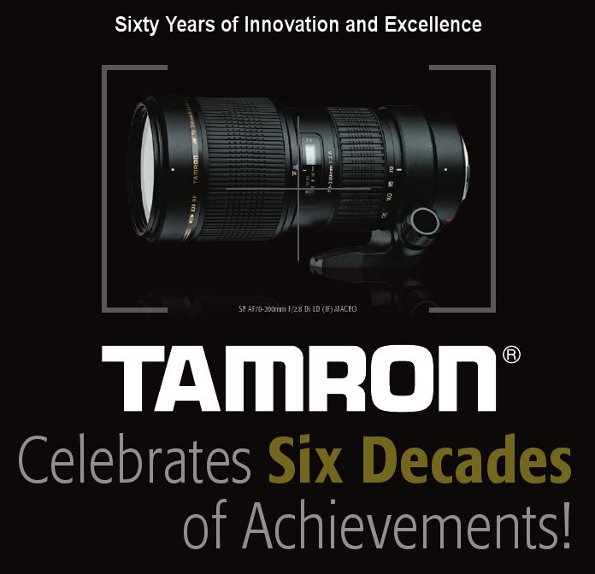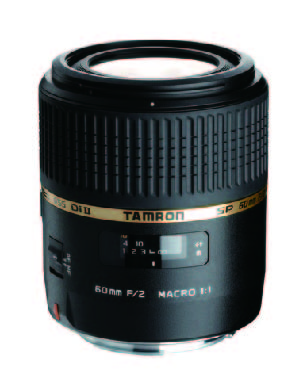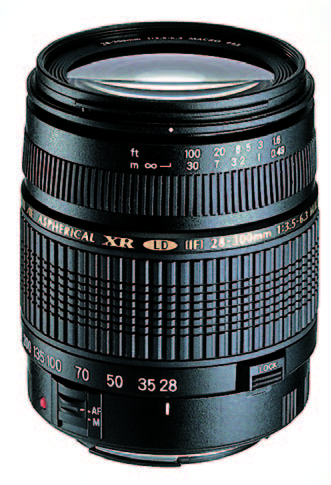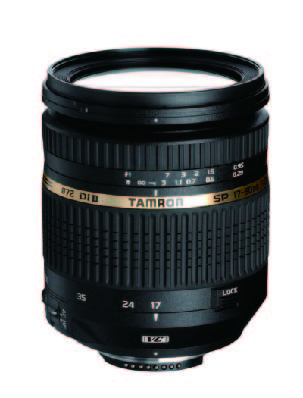 From its inception in 1950, Tamron has crafted a reputation for innovative optical products of the highest caliber for photographic, video, and commercial applications. From it’s origins as a manufacturer of camera and binocular lenses, the company, then known as Taisei Optical Equipment Manufacturing, focused on the pursuit of optical excellence through research and an unwavering dedication to improving production efficiency through the enhancement of precision manufacturing processes. North American photographers were first introduced to the line in 1957, with the arrival of the first 135mm F/4.5 lenses designed for use on 35mm SLR cameras. The “T” mount concept, which allowed a single lens to be used with interchangeable mounts matching a range of SLR cameras, was a unique approach to multi-system compatibility, and it was extremely well received by photographers worldwide.
From its inception in 1950, Tamron has crafted a reputation for innovative optical products of the highest caliber for photographic, video, and commercial applications. From it’s origins as a manufacturer of camera and binocular lenses, the company, then known as Taisei Optical Equipment Manufacturing, focused on the pursuit of optical excellence through research and an unwavering dedication to improving production efficiency through the enhancement of precision manufacturing processes. North American photographers were first introduced to the line in 1957, with the arrival of the first 135mm F/4.5 lenses designed for use on 35mm SLR cameras. The “T” mount concept, which allowed a single lens to be used with interchangeable mounts matching a range of SLR cameras, was a unique approach to multi-system compatibility, and it was extremely well received by photographers worldwide.

Tamron’s SP60mm F/2.0 Di-II Macro (Model G005) was awarded the Digital Camera Grand Prix 2010 Interchangeable Lens Section Silver Prize.
With the success of the early SLR lenses, the Tamron brand was registered in 1958, and the company began to expand the line of high quality interchangeable lenses. In 1961, the 95-205mm F/ 6.3 was designed, and it soon became famous as the first affordable zoom lens for 35mm SLR cameras; the company’s reputation for manufacturing high quality, innovative, and affordable lenses was firmly established. Through the 1960s, Tamron lenses exhibited a continuous series of successful introductions. In 1966, the Adapt-A-Matic range of interchangeable mount lenses provided autofocus capabilities for a variety of SLR cameras. The company expanded in the field of industrial and broadcast television lens manufacturing as well, with a full line of ultra precision lenses and prisms. In 1970, the company name was officially changed to Tamron Co. Ltd., and the development of core technologies continued. In 1976, the Adaptall Lens series was introduced, incorporating the advantages of lightweight macro focusing mechanisms and quick-focus features. The continuing success of the line led to the establishment of a U.S. subsidiary, Tamron Industries Inc., in 1979, and the first of the Super Performance (SP Series) lenses became available, led by the legendary SP 90mm F/2.5 Macro lens (Model 52B). The 1980s saw a revolution in SLR camera designs, with autofocus SLR and compact 35mm cameras expanding the range of the consumer market. Tamron expanded manufacturing facilities in Japan, established operations in Germany and Hong Kong, and in 1984 the company was registered at the Tokyo Stock Exchange for over-the-counter trading. Capital increased to more than 3.8 billion Yen.

The AF28-300 F/3.5-6.3 (A06) won European Lens of the Year 2002-2003; the Year 2000 Good Design Award; and the CAPA Lens Grand Prix 2002-2003.
The 1990s was a decade of significant achievements for Tamron, with a string of awards for excellence and innovation. The SP AF35-105mm F/2.8 was proclaimed European Lens of the Year, 1992-1993; The AF28- 200mm F/3.8-5.6 Aspherical was honoured as European Lens of the Year, 1993-1994, as well as being awarded the 1993 Grand Prize (Photographic Lens Section) by Popular Science Magazine. In 1997 the SP AF90mm F/2.8 Macro 1:1 was declared European Lens of the Year 1997-1998. The decade culminated with the AF28-300mm F/3.5-6.3 LD Aspherical IF (Macro) winning the Camera Grand Prix ’99 Journalists Club Special Prize; European Lens of the Year 1999-2000; TIPA Lens Grand Prize; and Grand Prize (Photographic Lens Section) Popular Science Magazine. With the dawn of the new millennium, the international awards and recognition continued. In 2000, the Tamron AF28-200mm F/3.8-5.6 Aspherical (IF) Super Macro II was selected as European Lens of the Year, 2000- 2001. The following year, the AF28-200mm F/3.8-5.6 Super XR Aspherical (IF) Macro won the title TIPA Best Lens in Europe 2001- 2002. The medium format Tamron RF645 was awarded Camera Grand Prix 2001 Journalists Club Special Prize; Best Professional Photo Product in Europe 2001-2002; and EISA/ European Professional Camera of the year 2001-2002. In 2002, the AF28-300 F/3.5-6.3 (A06) won European Lens of the Year 2002-2003; Year 2000 Good Design Award; and CAPA Lens Grand Prix 2002-2003. The AF28-75mm F/2.8 XR Di LD Aspherical (IF) Macro zoom lens won European Lens of the Year 2003-2004. In 2005, the AF28-300mm F/3.5-6.3 XR Di LD Aspherical (IF) Macro won the “2004 Nikkei Superior Products and Services Award” from Nikkei Business Daily.

The SP17-50mm F/2.8 XR Di-II VC (Model B005), won the Digital Camera Grand Prix 2010 Interchangeable Lens Section Gold Prize.
In 2005, with the expansion in mobile telephone technology, Tamron began marketing operations for lens units for mobile phones – you may own more Tamron lenses that you thought! With the introduction of VC technology – Tamron’s unique vibration compensation mechanism, photographers have a wider range of choices when they select lenses for the latest DSLR cameras. Advanced optical technology has resulted in the creation of ASL Hybrid Aspherical Elements that produce the ultimate image quality in compact lenses, virtually eliminating spherical aberration and image distortion in the high-power zoom series – one lens element can now take the place of multiple elements to deliver uniformly high quality images at all focal lengths and apertures, in the remarkably compact long-range lenses. Tamron designers continue the tradition of innovation with new products and technology – including camera lenses built into vehicles, and far-infrared-related optical and electronic components for a diverse range of emerging imaging categories. While we are most familiar with the photographic lenses, the full range of Tamron products is reflected in the company’s famous corporate tag line: “Tamron – New Eyes for Industry.” Discover the world of Tamron lens technology at www.tamron.ca.
| PHOTONews on Facebook | PHOTONews on Twitter |






